| The ICOMOS-CIAV & ISCEAH 2019 Joint Annual Meeting & International Conference on “Vernacular & Earthen Architecture towards Local Development” |
| PublishDate:2019-10-14 Hits:13822 |
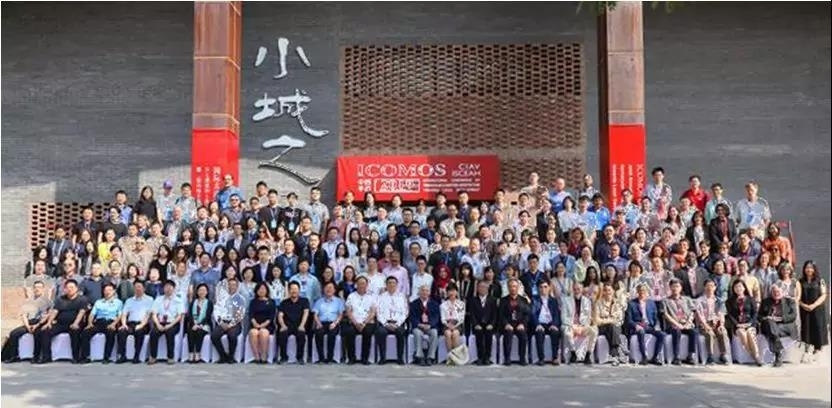 The ICOMOS-CIAV & ISCEAH 2019 Joint Annual Meeting & International Conference on “Vernacular & Earthen Architecture towards Local Development” was held from 6-8 September at the Ancient City of Pingyao. It is co-organized by ICOMOS-CIAV, ICOMOS-ISCEAH, ICOMOS-CHINA, WHITRAP Shanghai, the Academic Committee of Historical and Cultural City Planning - Urban Planning Society of China (ACHCCP-UPSC), the Academic Committee of Urban and Rural Built Heritage - Architectural Society of China (ACURBH-ASC) and Tongji University in collaboration with Shanghai Tongji Urban Planning and Design Institute Co., Ltd. (TJUPDI) and Tongji Architectural Design (Group) Co., Ltd. (TJAD), with sponsorship from Pingyao County CPC Committee, Pingyao County People's Government and the International Workshop of Urban and Rural Heritage Conservation and Development in Pingyao.
It is the first joint annual meeting and international conference of two ICOMOS International Scientific Committees that has ever been held in China. The three-day event gathered more than 400 participants, including 243 registered participants from 27 countries and observers comprised of local residents and colleague students and teachers in China, to exchange ideas of and discuss about the topic of “Vernacular and Earthen Architecture Conservation towards Local Development”.
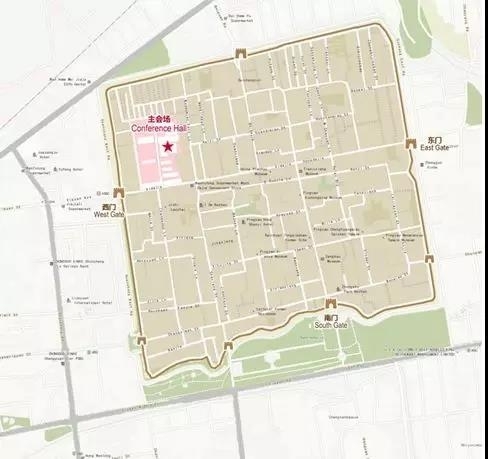 Pingyao Festival Palace, at the northwest of Pingyao Ancient City
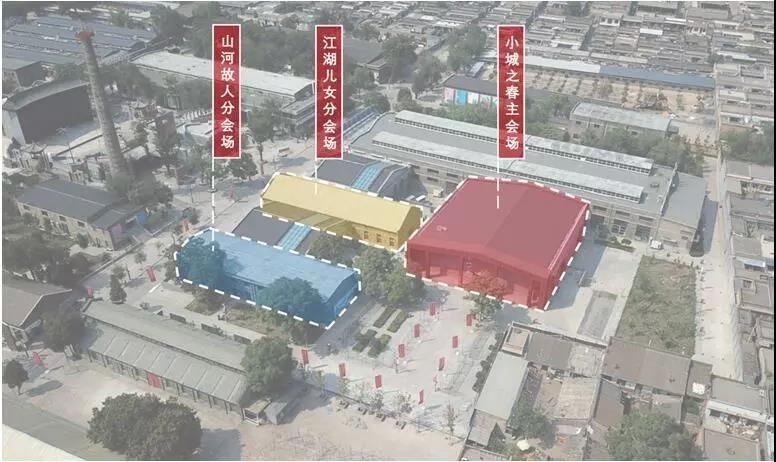 Aerial View
(It was a diesel engine plant. The warehouse structures were listed as historical buildings in the Conservation Plan formulated by TJUPDI in 2008.)
The international conference is divided into 4 sub-themes (1. Architectural features, values and conservation; 2. Challenges and possible solutions; 3. Contemporary conservation and technical innovation; 4. Adaptive reuse and revitalization towards local development) and 1 special theme on “heritage conservation going public: case studies of Pingyao international workshop”. A total of 96 presentations were made on four sub-themes and one special theme of the conference, including 5 keynote speeches, 16 thematic speeches and 10 speeches dedicated to the special “Pingyao International Workshop” session. As chief coordinator of the conference, Shao Yong, a professor from Tongji University and CIAV & ISCEAH Expert Member, read out the discussion draft of Pingyao Initiative, which aims to promote the conservation of cultural heritage towards the public. The conference proceedings had been published before the opening of the conference thanks to a year of hard work by the conference committee, Shao Yong and her team. Other outcomes of the conference have also been published in the conference website.
Opening ceremony
The opening ceremony was held at the “Spring of Small Town” Conference Hall of Pingyao Festival Palace in the morning of 6September. Niu Jitong, a member of the Standing Committee of Pingyao County Party Committee and the Vice Mayor of Pingyao County, presided over the ceremony.
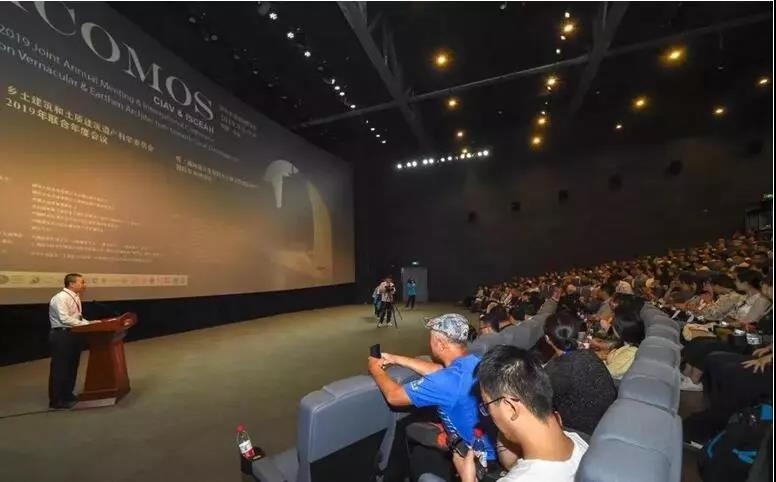 Niu Jitong presides over the ceremony.
Xiao Li, Chief of World Heritage Division under Department of Cultural Heritage Conservation and Archaeology of National Cultural Heritage Administration, expressed her congratulations on the opening of the meeting on behalf of the National Cultural Heritage Administration and welcomed the experts from all over the world. She further reviewed the cooperation between China and ICOMOS. She said the historical buildings in the Ancient City of Pingyao are outstanding representatives of Chinese traditional architecture. The National Cultural Heritage Administration has been paying high attention to the conservation of Pingyao, and provided numerous support in financial, technological and training terms, so as to facilitate local effort to tap the potential heritage resources and make Pingyao a showcase of exceptional traditions of China. The success of this academic activity demonstrates local government's resolution on the conservation of cultural heritage and their confidence in a sustainable future of the city.
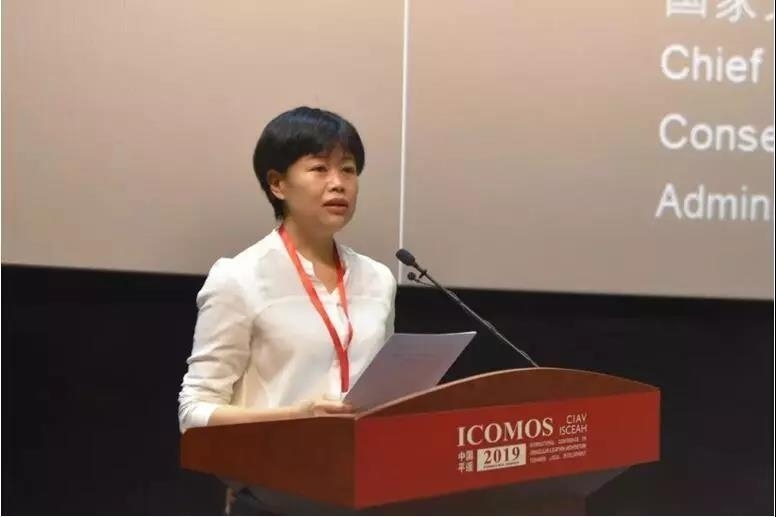 Xiao Li made a speech
Wang Lijun, the Vice President of ICOMOS-China and Director of Institute of Architectural History of China Architecture Design and Research Group, welcomed the experts and representatives at home and abroad and acknowledged the contributions from Shanxi Provincial and Pingyao County governments to this meeting. He pointed out that vernacular building is a product of the harmonious evolution of human settlement culture and natural environment, reflecting the most simple and creative wisdoms and skills of mankind. Earthen architecture is an important building type around the world. As a ubiquitous and easy-to-mold material, so earth is widely used in local building construction practices. The symposium of the two ICOMOS scientific committees provides multiple perspective to approach the topic. The Loess Plateau, where the ancient city of Pingyao is located, is the best preserved area of China's existing vernacular earthen structures. The memories and legacies left by ancestors will also shed a light on future regional development. It is believed that Chinese and international experts can exchange and learn from each other through this platform and contribute their insights to the protection of local and earthen architectural heritage for local development.
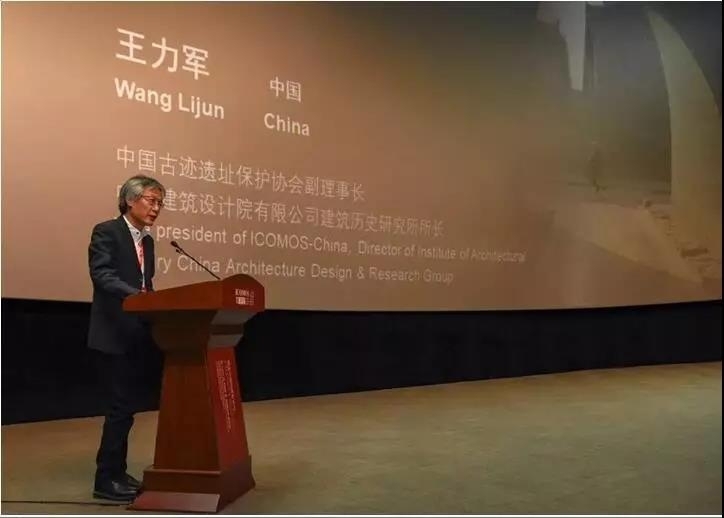 Wang Lijun made a speech
Representatives from other organizers of the conference delivered welcome speeches, including Li Jinsheng, Deputy Director of Housing and Urban-Rural Development Department of Shanxi Province, Zhao Ying, Deputy Chief Architect of Tongji Architectural Design (Group) Co., Ltd., and Shi Yong, Mayor of Pingyao County.
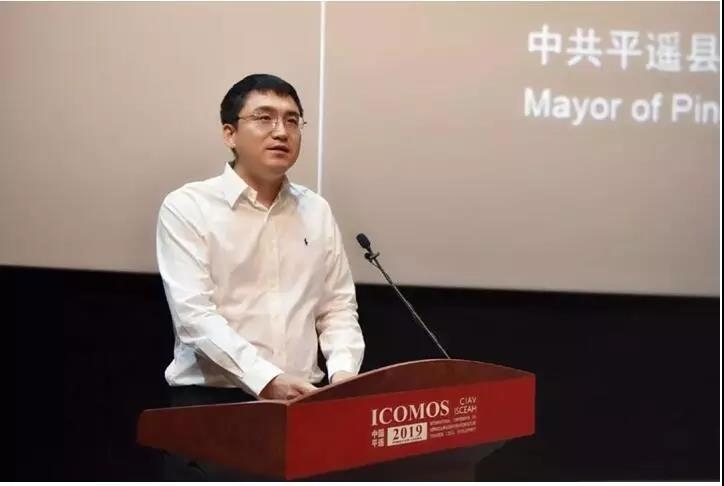 Mayor Shi Yong made a welcome speech
Professor Ruan Yisan from Tongji University made a keynote speech that gave a brief review on the conservation history of the Ancient City of Pingyao. He looked back to the strenuous effort made by him and his students to save Pingyao's cultural heritage through the formulation of the first local conservation plan in 1980s, as well as the successful nomination as a World Heritage Site in 1997 and looked into the achievements that has been made at the current stage. He also introduced the contents and principles of the conservation plan through demonstrations of hand-made drawings and old photos from 1980s, presenting to the public and the world Pingyao's achievements in heritage conservation cause.
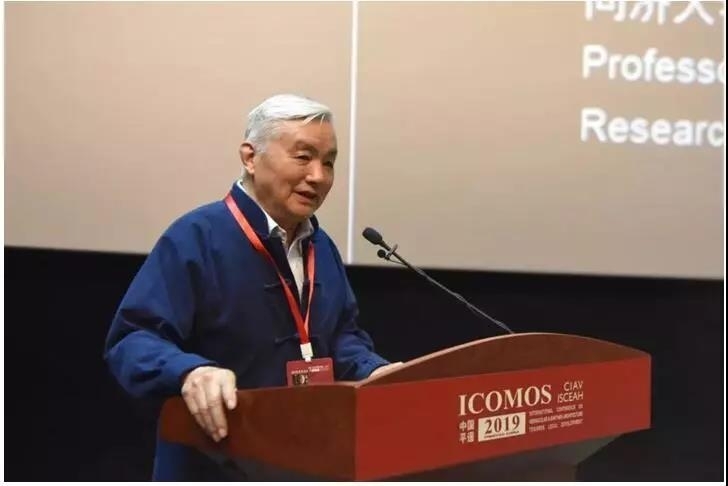 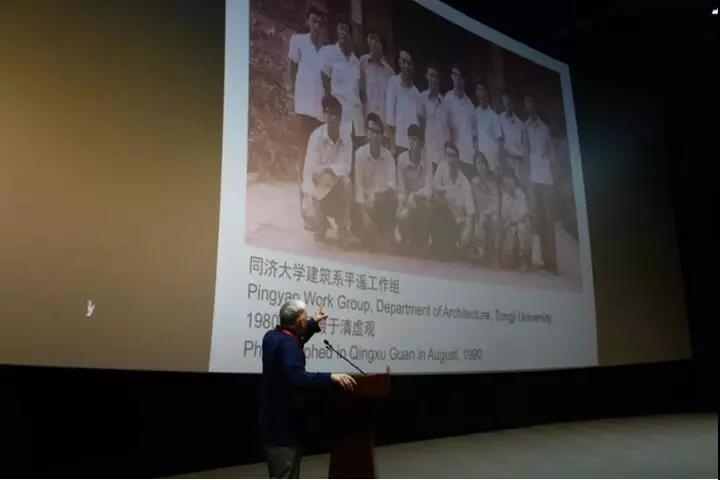 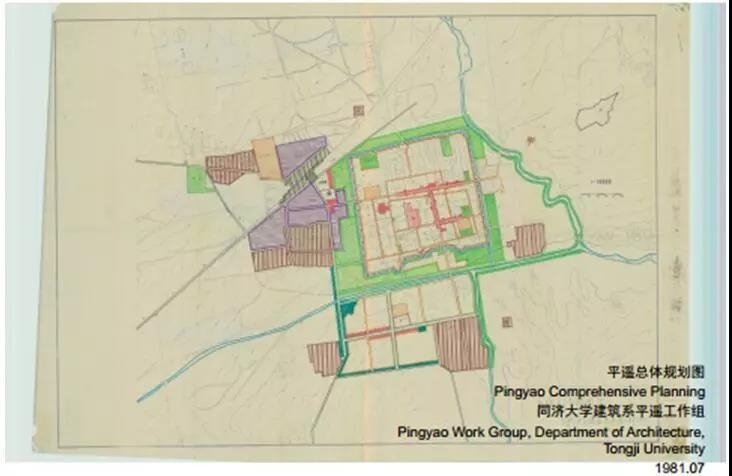 Ruan Yisan made a speech on the conservation of Pingyao Ancient City
VERNADOC (Vernacular Documentation) word refers to a methodology for vernacular architecture study that emphasizes the collecting of data and information on site by basic techniques to produce high quality measured drawings. The camp is a regular pre-event of the ICOMOS CIAV conference.
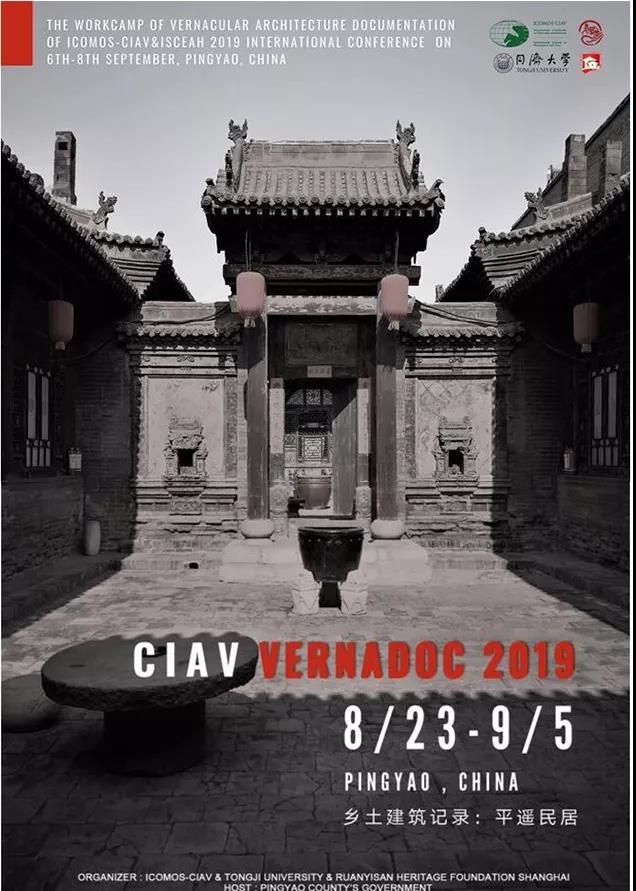 Following the opening ceremony, a certificate awarding ceremony was held for the participants of this year's VERNADOC working camp. Ruan Yisan spoke highly of the documentation outcomes and together with Gisle Jakhelln, awarded certificates to the participants. The outcomes of this working camp as also exhibited at the conference venue.
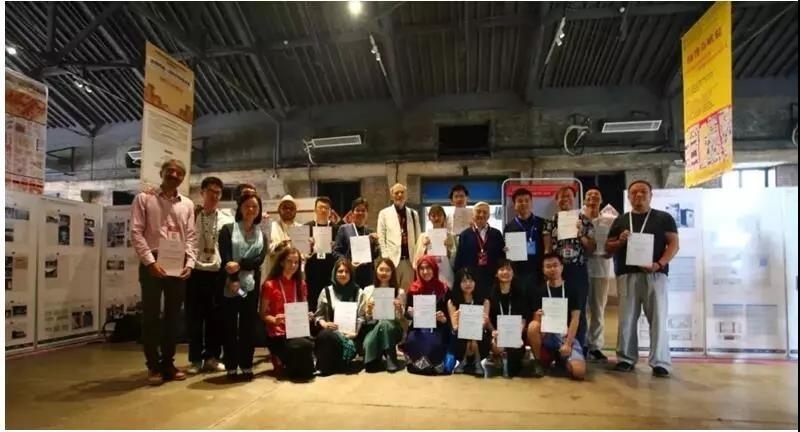 Group photo of VD camp
A total of 96 presentations were made on four sub-themes and one special theme of the conference, including 5 keynote speeches, 16 thematic speeches and 10 speeches dedicated to the special “Pingyao International Workshop” session.
1. Keynote Speeches
During the keynote speech session following the opening ceremony, which was moderated by Wang Lijun, the Vice President of ICOMOS-China and Director of Institute of Architectural History of China Architecture Design and Research Group, experts from China and other countries shared the outcomes and experience in each other's working areas.
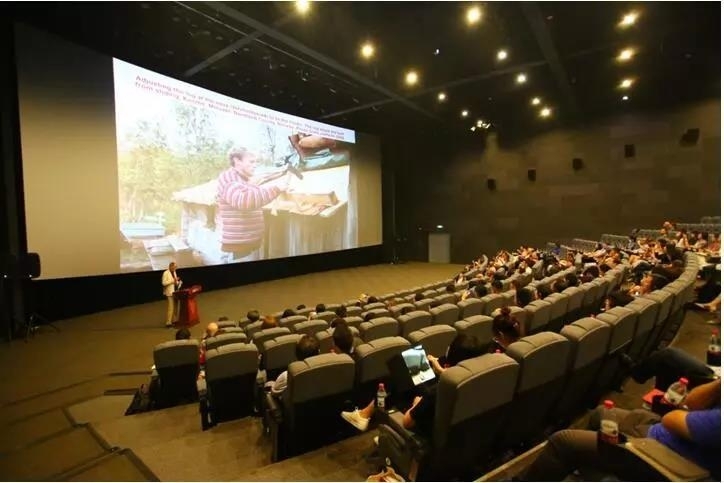 Gisle Jakhelln made a speech
The ICOMOS-CIAV President Gisle Jakhelln made a speech on “Turf as a Roofing Material” and introduced the application of turf as a special roofing material in North Europe. He pointed out that turf roofing, which enabled a better understanding of heritage among local communities, was actually a choice of environment and an intrinsic evolution process.
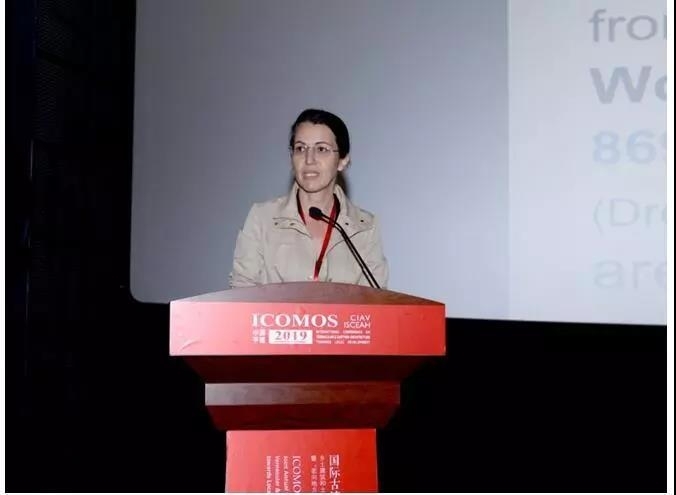 Mariana Correia made a speech.
The ICOMOS-ISCEAH Present Mariana Correia made a speech on “World Heritage: an approach to Vernacular and Earthen Architecture”, which emphasized the important role of earthen architecture in World Heritage properties, and urged more and in-depth research on this topic.
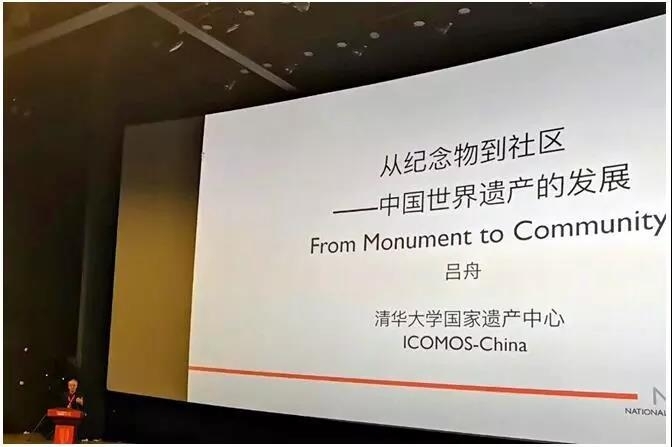 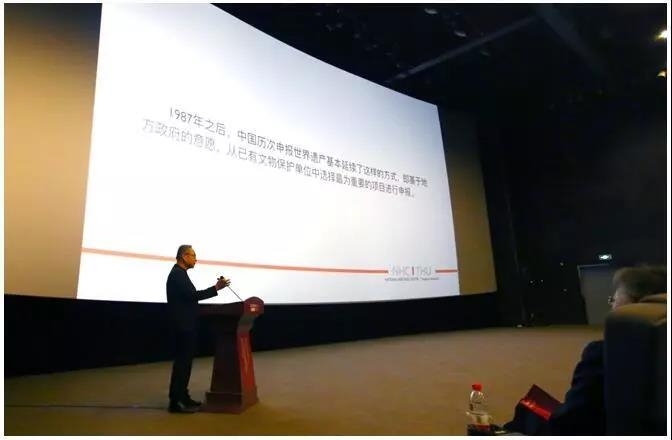 Professor Lyvu Zhou made a speech
In his report themed “From Monument toCommunity: the Development of World Cultural Heritage in China”, the Vice President of ICOMOS-China Professor Lyu Zhou from Tsinghua University pointed out that the concept of heritage conservation has gone through shifts from government-led approach to public participation, from experts to communities, from monuments to properties of general folks, from archaeological sites to 20th century heritage, from isolated protection to sustainable development, and from value-based philosophy to people-centered perspective. He elaborated this development track via cases of World Heritage sites such as Lijiang Old Town, Honghe Hani Rice Terraces and Kulangsu.
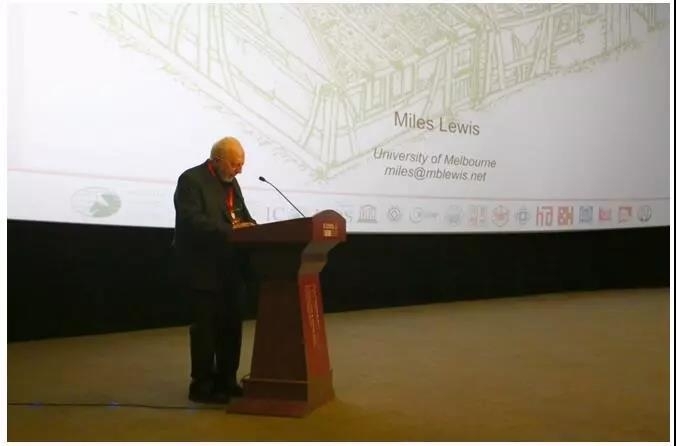 Miles Lewis made a speech.
Miles Lewis, professor from University of Melbourne and an expert member of ICOMOS-CIAV, fully demonstrated the amazing combination of timber and earth through a number of cases all over the world. He stressed that the earth-timber hybrid construction has been long existing and evolving in human history. Whether or not the material will undergo further change in the future, it has already become a vernacular architecture type.
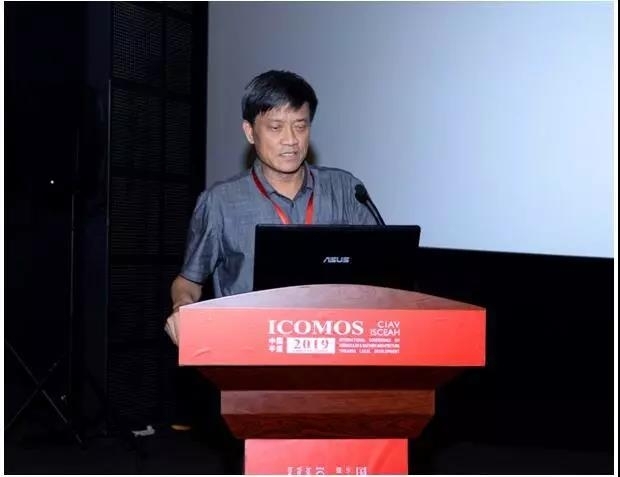 Chang Qing made a speech
Professor Chang Qing from Tongji University and a member of Chinese Academy of Sciences delivered a keynote speech on “Where is the way for built rural heritage regeneration in China?” He offered a systematic overview of the current situation of Chinese built rural heritage and the strategies for regeneration in his presentation. He analyzed the social context and status quo of built rural heritage, and proposed the three key elements of building, settlement and landscape. Starting from the classifications of regeneration types and models, he examined the challenges and problems faced by rural built heritage in the terms of management, conservation and funding system, and proposed corresponding strategies such as defining identity, remedying loopholes in safety, building up innovative entrust system, transmitting craftsmanship and developing different measures based on the classifications. He emphasized the research potential of vernacular building pedigrees, which divided rural heritage into two categories of prototype sampling and landscape and treated the two with different strategies of restoration and adaptive reuse. He further elaborated the strategy and technological framework for the conservation of the three elements. In the end of the speech, he stressed again that “rural vitalization and built vernacular heritage regeneration concerns the rejuvenation of Chinese nation”.
2. Thematic Speeches
Parallel Session 1: Architectural features, values and conservation
A total of 21 presentations were made on the theme “architectural features, values and conservation” of Parallel Session 1. Vernacular architecture which was a marginalized object in the past has gained more and more attention these years, along with new breakthroughs in terms of building materials and technologies.
The session was moderated by President of ICOMOS –CIAV Gisle Jakhelln, Professor Dong Wei from Southeast University and Rawiwan Oranratmanee the Associate Professor of Chiang Mai University.
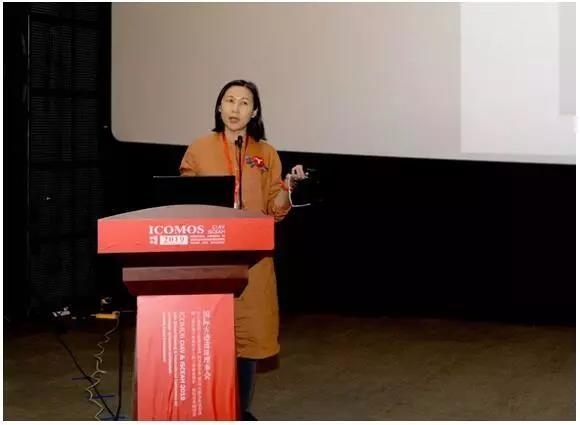 Rawiwan Oranratmanee made a presentation.
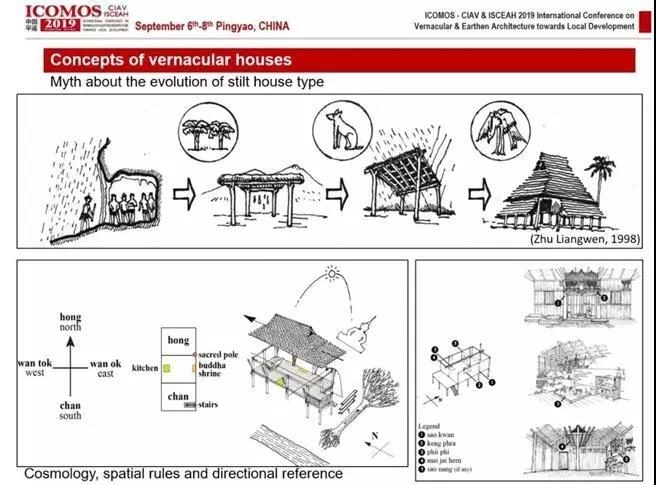 Abstract
Rawiwan Oranratmanee made a speech on the “Dynamics of Dai Cultural Landscape and Vernacular Architecture in Asia”. She briefly introduced the migration history of Dai subgroup that all the way came from East India through Southeast Asia to China. She pointed out that although the population is relatively small and the distribution is scattered, the entire ethic group shares commonalities in beliefs, language, customs/traditions, and peasant lifeways, as well as similarities in building techniques, such as the house orientation (facing valley). Later, she did a comparative study on the three sites in Thailand, Myanmar and China, analyzing the spatial order to confirm the above conclusions. Rawiwan concluded that the architectural similarities actually reflects the cultural similarities. The spatial characteristics of the Dai settlement fully reflect the transmission and adaptation of culture.
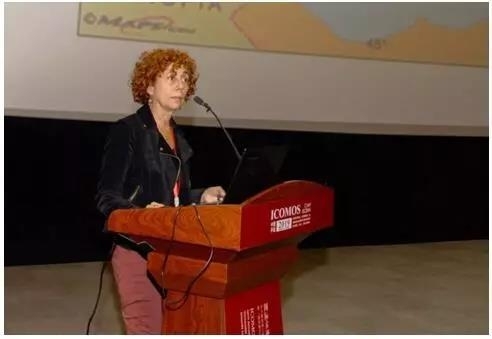 Pamela Jerome made a presentation
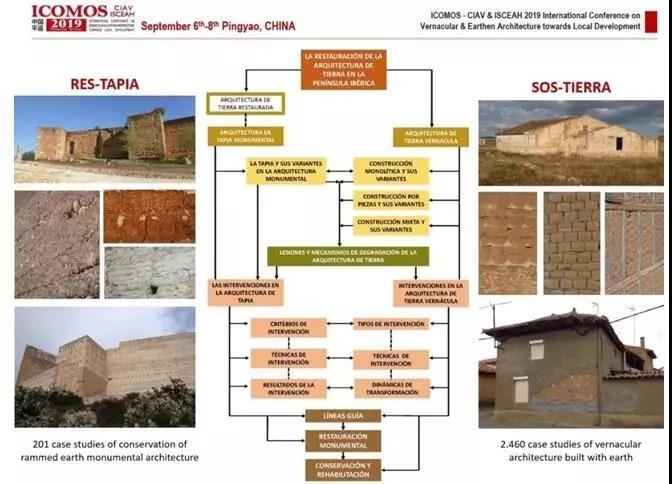 Abstract
Pamela Jerome made a speech on the “Values Inherent in Yemeni Tower Houses”. Under the influence of various geographical, geological, religious and living pattern factors, the tower houses with distinctive local features in Yemen were formed. The low latitude of Yemen leads to a strong demand for shading, which took in form of narrow streets with sound shading and ventilation purposes. Because the southern region is abundant with limestone, local people use these stones as a building material. Due to the need for privacy that was emphasized in local region, the buildings are multiply floors with very small windows. The independent building type accommodates the need for an extended family living together. These comprehensive factors work tighter to create the Yemen Tower which emerged as a part of local culture and a vivid reflection of social structure and culture.
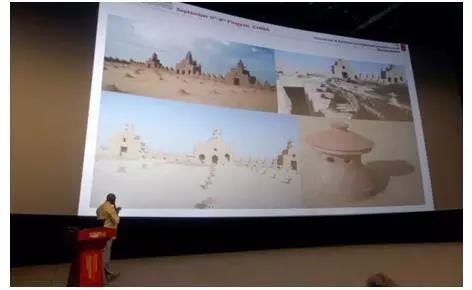 Oussouby Sacko made a presentation
Oussouby Sacko made a speech on “The Involvement of Local Communities into Conservation Process of Earthen Architecture in the Sahel-Sahara Region”. He took the case of Djenné, a small town in Mali, as an example. Djenné is a small city in the Niger Inland Delta of central Mali.Djenné is organized around ethnic/professional quarters along a major axial system, at the center of which the mosque and the market square form an imposing urban space. Different ethnic groups coexist in the region and have different occupations and specializations. The field surveys were conducted to record the preservation and restoration process of a local mosque. The research team also documented intangible heritage, including cultural conservation.
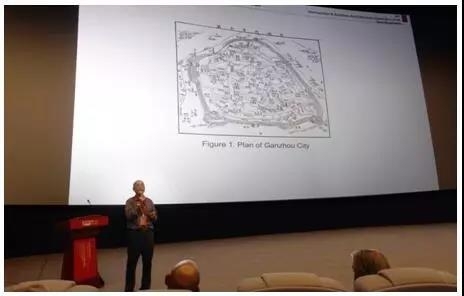 Wu Qingzhou made a speech on “The Cities And Buildings In Kejia Area Under Influence Of Yang Junsong”. Yang Junsong, a master of Chinese Fengshui theory, has great influence on Hakka area. The shape of Meizhou is like a turtle running towards the river. To keep the tortoise safe, a number of Fengshui techniques were used such as construction of pagoda and pavilion. Weilongwu is another example. Weilongwu, is a type of the Hakkas houses in Meizhou, Guangdong Province, it’s form being the symbolic expression of the philosophic theory Tai Ji Tu Shuo. Kejia people live in mountain area, Master Yang Junsong created huatai as an very important element of Kejia house to adapt mountain area environment. It is a great devotion to China’s vernacular architecture. Huatai also expresses the idea of reproductive worship and life worship of Kejia. Weilongwu is both an organic building and an ecological building, it also embodying Chinese traditional philosophy and wisdom, standing for ideas of Fengshui and architectural arts.Kejia people of talent coming forth in large numbers.
Professor Dong Wei, as one of the moderators at this parallel session, concluded that the 12 speakers approached traditional architecture from social, environmental, historical, cultural and material terms and raised interesting topics that worth our thinking in the future.
2.2
Parallel Session 2: Challenges and possible solutions
The 22 presentations made on the topic explored the challenges and conflicts brought by conservation and development. There are multiple ways and solutions to coordinate the balance between tourism development and heritage conservation, as well as the relationship between residents, businesses and other stakeholders, which requires different perspectives to protect the diversity of cultural landscapes and to pass on knowledge and experience with the maximum involvement of the public.
The session was moderated by ICOMOS-ISCEAH Presient Mariana Correia, former deputy chief planner of China Academy of Urban Planning and Design Zhao Zhongshu and Camilla Mileto and Fernando Vegas, both ISCEAH Board members and Professors of Valencia University of Technology.
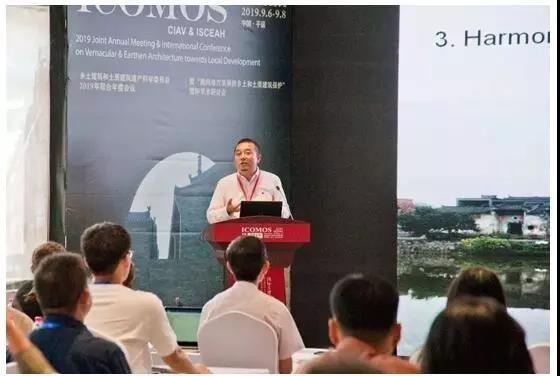 Du Xiaofan made a speech
Du Xiaofan made a speech on “From Past to Future --The Vision and Dilemma of Rural Heritage”. He analyzed the preservation status of contemporary Chinese villages and the effects of different utilization methods. He pointed out that we should better understand the knowledge and skills of the traditional villages, the rural survival wisdom, and perceive rural heritage as national cultural landscapes. Although the protection of traditional villages is currently facing a dilemma but the future is optimistic.
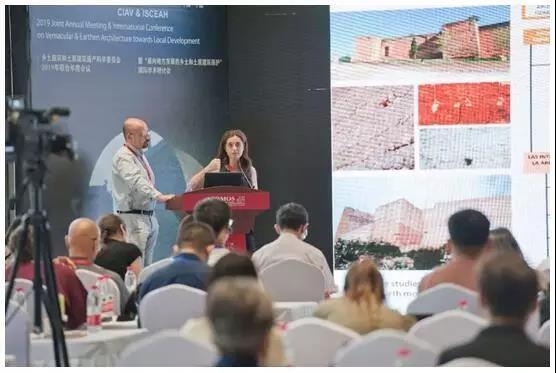 Camilla Mileto and Fernando Vegas made a speech
Camilla Mileto and Fernando Vegas made a speech on “Conservation and rehabilitation of traditional earthen architecture in the Iberian Peninsula”. The earthen architecture in the Iberian Peninsula has a long history and are rich in variety, from ancient Roman monuments to medieval buildings, which continue to exist in the present. While important monuments have been well protected, those lessor buildings are not. Through the “SOS-TIERRA” initiative, the research team conduct surveys, lectures, forums, and some first-aid work. In the process, they collected extensive data and conducted in-depth research on the relationship between soil technology, materials, architecture and topography, and climate, and has drawn a large number of drawings. Through this effort, they analyze the status quo of the earthen architecture that are not listed as monuments. The two speakers introduced their work in Spain, including more than 2,000 surveys of earthen buildings, the publication of promotional materials, the application of new technologies, etc., through which they hope to attract more attention and engage more people into the protection of vernacular buildings.
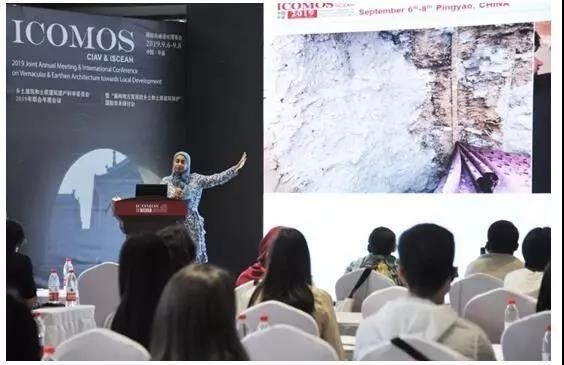 Marwa Dabaieh made a speech.
Marwa Dabaieh made a speech on “Dare to Build: Designing with earth, reeds and straw for contemporary sustainable welfare architecture”. First, she introduced a Project-based learning and integrated design method, which is to form a perfect design process through close cooperation among the owner, architect, contractor and operator through short-term on-site learning. Based on this approach, she introduced a four-day construction experiment: from the beginning of material matching in the laboratory, to the practice of traditional architecture on the spot, to the structural design based on traditional practices, and finally to explore a design based on tradition. The new construction method has both theoretical and practical significance. She concluded by stressing that the experiment enables to quickly learn about local architectural practices and to innovate on the basis of a understanding of local practices.
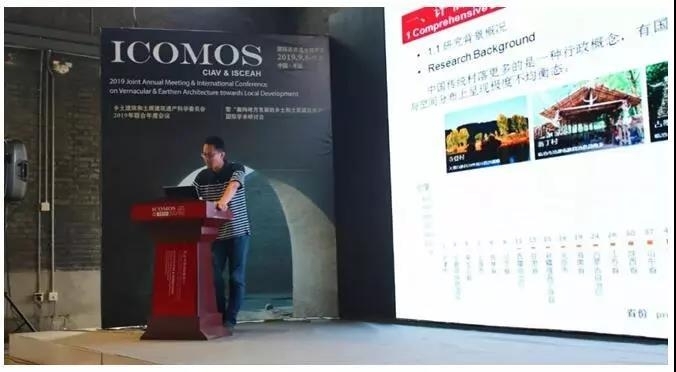 Yang Kai made a speech
Yang Kai made a speech on “Predicament of Traditional Villages Conservation and Response of Adaptive Conservation Technologies in China”. He detailed the research project completed by the China Academy of Urban Planning and Design in recent years on the preservation and protection of traditional Chinese villages. The project first established an integrated evaluation system covering the five major categories of nature, historical humanities, socio-economic, built environment and infrastructure, and the corresponding 25 analysis factors. On this basis, the current traditional villages were discovered and summarized. The dilemma can be divided into three levels: human settlement, culture, technology and system. Finally, in order to solve the above problems, the adaptive method is constructed, including the analyzing value pedigree, formulating classification standards, building rehabilitation and environmental improvement, digital filing and dynamic monitoring. Yang Kai finally pointed out that traditional village research requires collaboration among multiple disciplines (sociology, anthropology, ecology, information science, etc.), and requires long-term constant updating.
2.3
Parallel Session 3: Contemporary conservation and technical innovation
14 reports were made on the Parallel Session 3 “contemporary conservation and technical innovation”. The contemporary research is focusing on the application and integration of traditional skills and wisdoms into modern technologies for sustainable development, and making best use of these technology through exchange and communications.
The session was moderated by ICOMOS-ISCEAH Vice-President Maddalena Achenza, Dai Shibing, Professor from Tongji University, and Claudia Cancino, the ICOMOS-ISCEAH Expert Member and Senior Project Specialist of the Getty Conservation Institute.
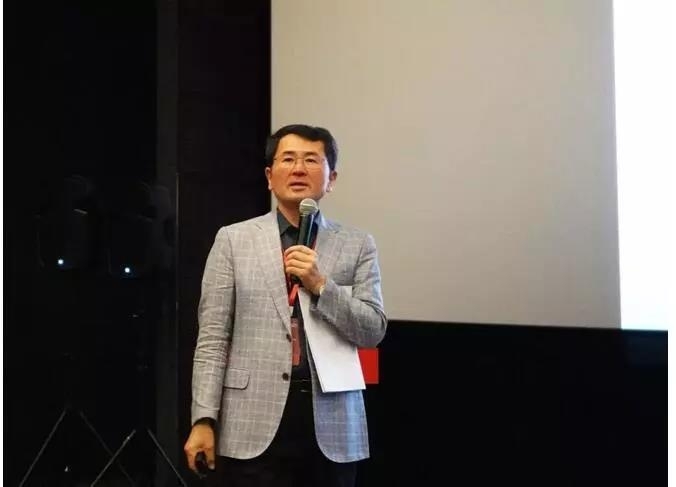 Pilwon Han made a speech
Pilwon Han made a speech on “Open-Ended Reconstruction: A New Approach to the Conservation of the Wooden Architectural Heritage in East Asia ”. He pointed out that reconstruction is a long-pending controversial issue around the conservation of cultural heritages in East Asia. A gap exists between the construction traditions of East Asia and the World Heritage Convention. The 1994 Nara Document emphasizes the issue of heritage diversity. The diversity of cultures and heritage in our world is an irreplaceable source of spiritual and intellectual richness for all humankind. All judgments about values attributed to cultural properties as well as the credibility of related information sources may differ from culture to culture, and even within the same culture. It is thus not possible to base judgments of values and authenticity within fixed criteria. On the contrary, the respect due to all cultures requires that heritage properties must be considered and judged within the cultural contexts to which they belong. For wooden structures in East Asian, constant maintenance is required. Historically, many buildings are not static, and some are regularly replaced. Therefore, we should perceive reconstruction as an ongoing open-ended process, which itself is also a major feature of traditional wooden architecture in East Asia. Only in this way can the authenticity of the heritage be guaranteed.
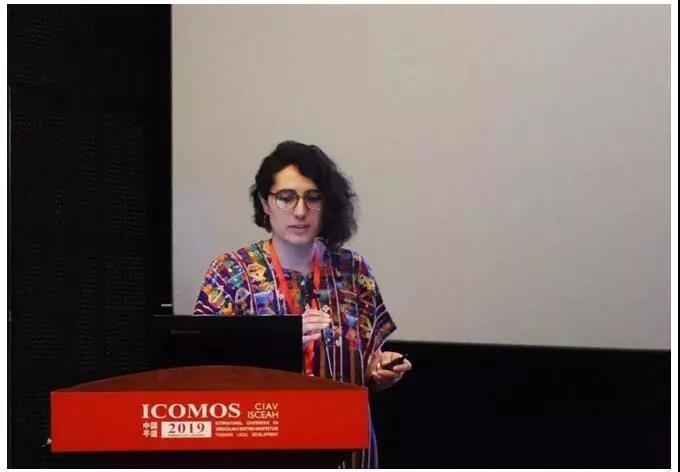 Amanda Rivera Vidal made a speech
Amanda Rivera Vidal made a speech on “”Casa Copaja” Restoration. An example of contemporary intervention in Arica’s vernacular heritage”. She first stated that this is not an academic research, but a restoration practice. The building is located in the desert of northern Chile and is a colonial church, but for a long time without any intervention to maintain the quality of the building. She gave a very detailed introduction to the entire design and restoration process, such as how to combine imported materials with local ones, how to add (aquatic plant) fiber coverings, how to replace wood, and how to replace foundation materials. She thinks it is very important to let everyone know the new method. In addition, she thanks the design and construction team for their efforts in convincing the local people during the reconstruction process to make them aware that the reconstruction of the heritage is important.
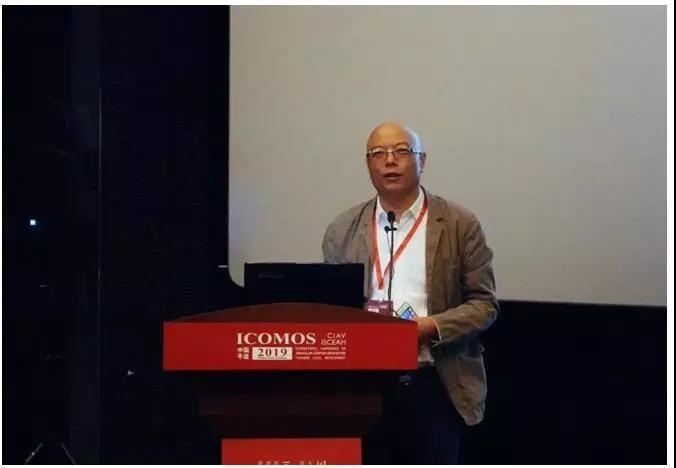 Dai Shibing made a speech
Dai Shibing made a speech on “Maintenance Concept of the Rammed Earth Finishing of the Historic City Wall of Pingyao Shanxi Province, PR China-based on re-evaluation of mock-ups in 2007”. One of the remarkable characteristics of the Ancient Pingyao City Wall, which has been listed as a Cultural World Heritage Site in 1997, is the internal rammed earth finishing. Although many restoration campaigns and daily or weekly maintenance efforts have been done in the past three decades, parts of the city wall are still in danger to collapse . In order to develop an effective but sustainable restoration and maintenance method for Pingyao city wall, in 2006, a research team has been organized. Comprehensive research works have been carried out to systematically analyze conditions and the causes of deteriorations. The main tasks of the research framework in 2006-2007 should specify the sustainable methods to consolidate and maintain integrity of the city wall of Pingyao, especially the earthen finishing needs to be preserved. It has been concluded that the earth used for construction and restoration in Pingyao needs to be stabilized to research water resistance. Optimum dosage to stabilize Pingyao loess soil is the mix of quick air lime and natural hydraulic lime. Air lime alone is not effective enough to consolidate the soil with high content of silts to reach the required strength and durability. The total lime content shall be not higher than 10% to match the colour of not stabilized soil. The optimum dosage in the maintenance practices depends on the clay content of the soil. The higher silt content or the lower the clay content, the higher content of natural hydraulic lime is needed to be mixed to reach sufficient strength and water resistance. High content of water even after compaction guaranties the setting and strength development of lime-soil.
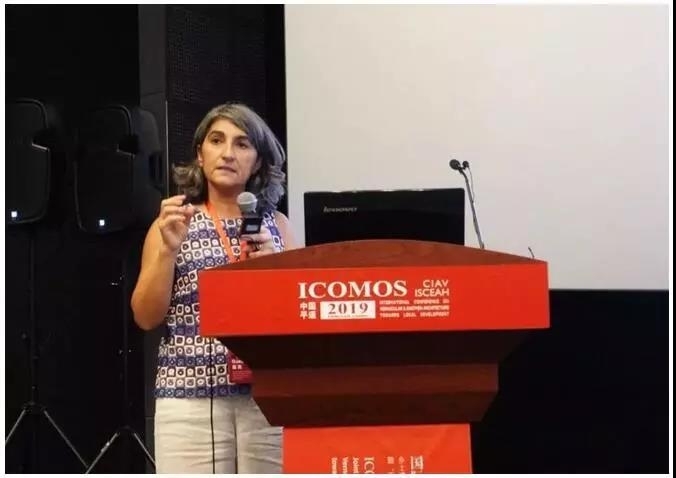 Maddalena Achenza made a speech
Maddalena Achenza made a speech on “Earth-fiber mixes for natural building products”. She took a case of an Italian island as the example. The island has extensive economic and social problems and is considered to be an underdeveloped region. A very real problem encountered in restoring buildings is that the building materials are expensive and the local residents cannot afford it. So local people decided to make their own building materials. For example, when making roofing materials, they initially used straw and soil to mix, which proved that the performance of this material is very close to that of wood fiberboard. Later, it was made of a sponge material that was considered as waste. Through processing and researching the material ratio, it was found that the effect is even better than straw. Local residents are still trying, such as combining soil and cellulose, using waste newspaper fibers, bleaching with oxygen, etc. In the process of producing building materials, it is very important to let the local small enterprises to be involved, especially the unemployed, so as to effectively promote local employment.
2.4
Parallel Session 4: Adaptive reuse and revitalization towards local development
The 14 reports showed a worldwide challenge of the emigration and poverty in rural areas. Our mission is to improve people’s lives through sustainable development based on the respect for vernacular architecture and the environment, and to make people interested in their environment and take pride in that. We must work on the improvement of facilities and construction materials that enables everyone to lead a 21st-century living style.
The session was moderated by Pamela Jerome, Secretary General of ICOMOS-ISCEAH and a CIAV Expert Member, Shao Yong, a professor from Tongji University, Ivan Enev, an architect and Hou Weidong, a research fellow from Chinese Academy of Cultural Heritage.
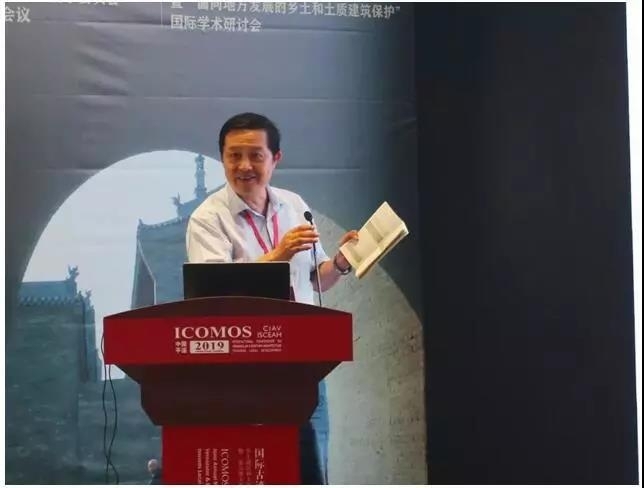 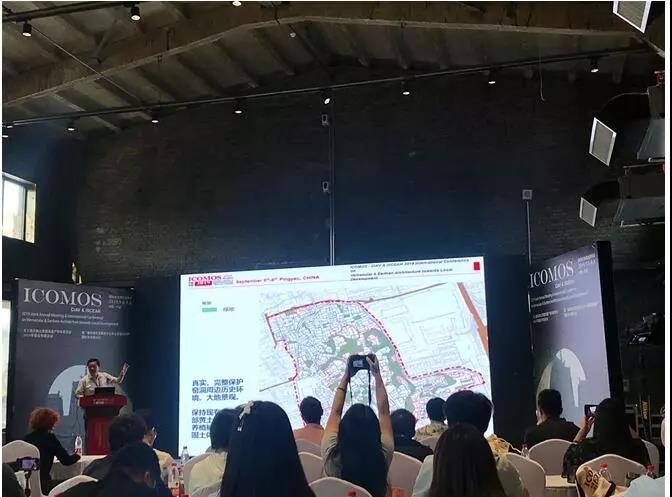 Hou Weidong made a speech
Hou Weidong made a speech on “History、Tradition and Landscape: A typical district of Cultural town”. He introduced the case of Yulin, an important historical city in the northwestern part of China's Shaanxi Province. Its ancient city has the characteristics of high in the east and low in the west. Due to the different geographical orientations, the vernacular cave housing also conforms to the terrain. Facades are different in width. He proposed that it is necessary to protect the authenticity and integrity of the historical and environmental landscapes around the cavern, to maintain the upper loess slope of the existing cavern and to rectify the surrounding environment. At the same time, it is necessary to re-develop land use plans, plot functions, traffic flow lines, restore and reproduce the landscape, improve basic supporting facilities, optimize traffic, increase green space, and create a cultural environment to make a historical city a living heritage.
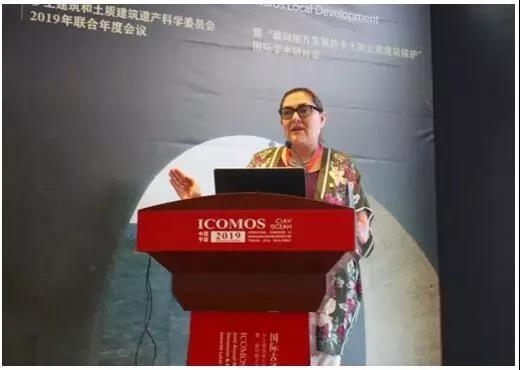 Claudia Cancino made a speech
Claudia Cancino made a speech on “Implementation of retrofitting techniques at the Church of Kuñotambo, Peru using local materials and expertise”. The earthen buildings in Peru are widely distributed, and the earthquake has caused serious damage to these buildings, so Getty developed a team to protect these buildings. They cooperated with engineers from Portugal, Peru and other countries to do a lot of research and research on the seismic resistance, materials and structure of earthen church buildings, using model-assisted design, 20-minute seismic test, mechanical property test and other technical means. .The application of some new technologies optimizes the traditional restoration methods. For example, the murals inside the church need to be cut prior to the restoration, and put back when the buildings are completed, so that the cutting lines will inevitably damage the heritage. The use of new technology has achieved overall better results.
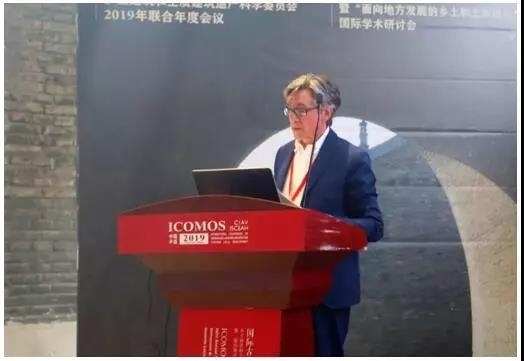 Roger Bataille made a speech
Roger Bataille made a speech on “What is a Petite Cité de Caractère® ? ” He described the plight of small towns in the process of urbanization, and these small towns have important values. In view of the lack of technical and economic support, small towns need to unite and form synergies. He introduced the concept and work of PCC and proposed that protection matters to everyone. The PCC is operated for elected city managers, heritage experts, residents and users. All cities and towns of PCC have special characteristics and differences. It is not a model, but the desire to move forward together around shared values. Such a living heritage is indispensable for strengthening community cooperation and must be understood and shared by all. Finally, he visually contrasts the picture of a big fish and a small fish, and the image shows the characteristics and advantages of the small town.
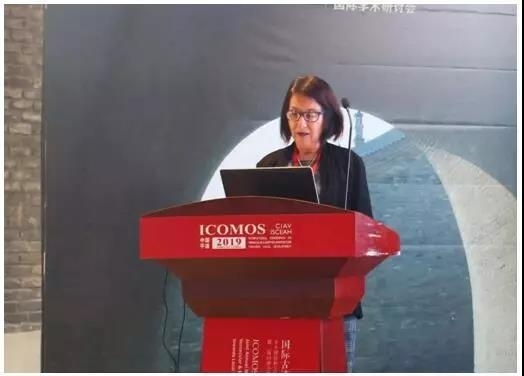 Maria Isabel Beas made a speech
Maria Isabel Beas made a speech on “Earthen Architecture Heritage and Conservation in Peru”. She said that the living area of the Waka people in Peru had a limestone soil structure two thousand years ago, which was influenced by Europe in historical development. Peru is now a testing ground for earthen building protection. Protection has begun in the 1960s. There are various challenges, including floods, mudslides, extreme weather, Stalinization, earthquakes, fires, piracy, construction and so on. In response, local tried many technical methods. There are many issues to consider when working on this, because the local culture is very fragile, so the way the workshop works is very important, it can discover and find traditional skills. She said that many protection jobs are now done by outsiders, and she hopes that the community should be more involved in the process, because this is the creation of their ancestors.
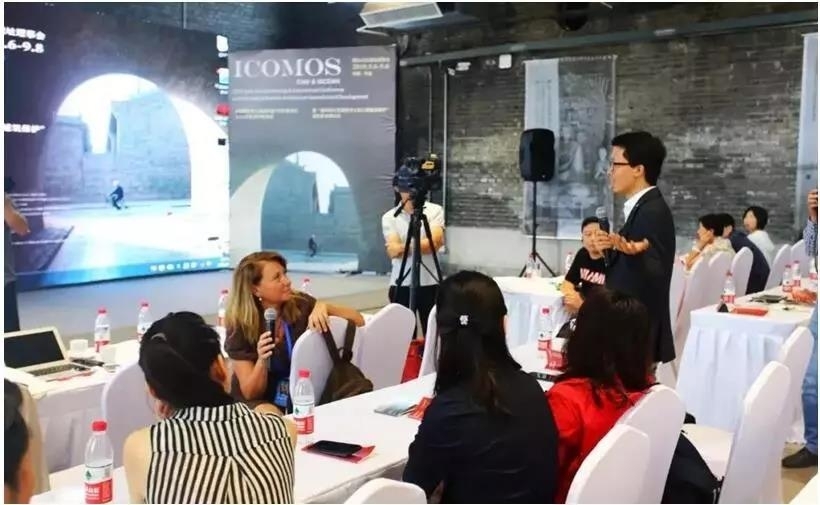 Exchange among participants at the forum
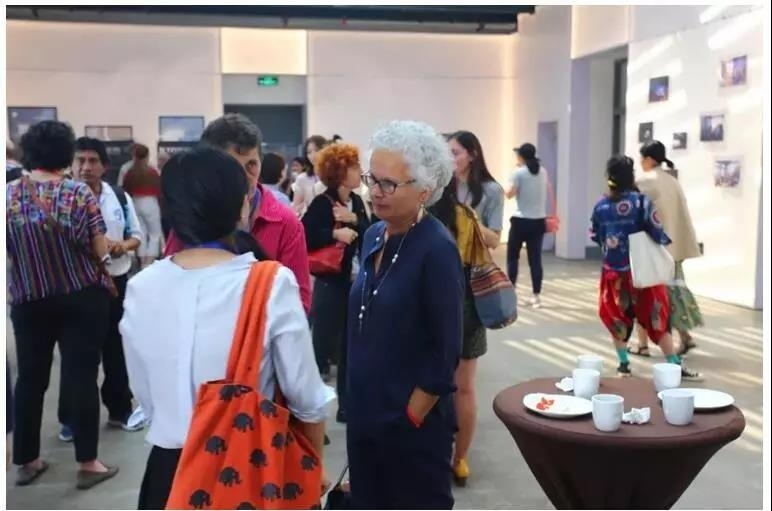 Exchange among participants at the coffee breaks
2.5
Special theme on “heritage conservation going public: case studies of Pingyao international workshop”
On the morning of September 7, a special session on heritage conservation going public: case studies of Pingyao international workshop was held. Roger Bataille and Li Jinsheng presided over the meeting.
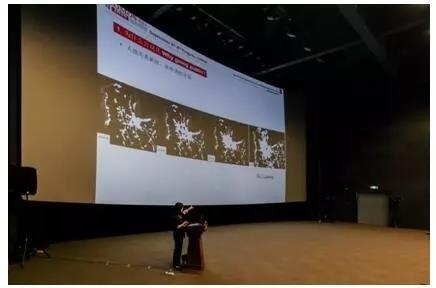 SHAO Yong (China, CIAV & ISCEAH Expert Member, Vice-Secretary General of ACHCCPUPSC, Professor of Tongji University) made a speech on “From World Heritage to Vernacular Heritage: Heritage Conservation Going Public” and introduced fields her team from Tongji University was working on. She pointed out that as heritage conservation had been upgraded into a new level, which should include not only experts but also the public. She further explored the argument with case studies from three dimensions: reasons for popularization, approaches, and the role of academics in the process. She also mentioned that with the influence of mixed factors such as changes in the types of heritage, expansions on the definition of heritage, threats brought by urban crisis, and growing tensions between human beings and our land, conservation methods had gradually evolved from specialized into comprehensive spheres. Therefore, it is of great significance to grasp the definition of ‘the public’ which includes direct stakeholders, local communities, and the general public. These three groups are the starting point for the Tongji team to popularize heritage conservation. Heritage organizations not just provide professional guidance for conservation but promote heritage conservation with their influence as non-profit organizations. Lastly, Shao made a summary on the purpose of heritage conservation and its popularization. The popularization of conservation helps develop self-awareness and joint effort of both professionals and the public towards heritage protection, which benefits the continuation of our civilization.
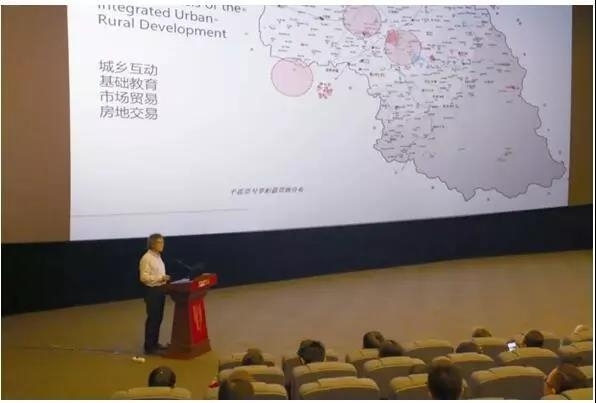 DONG Wei (China, CIAV Expert Member, Professor of Southeast University) presented his report on “Research on Pingyao Historic City Conservation & Development Based on Natural and Cultural Resources” and introduced the workshop of his team from Dongnan University. Through investigations towards over 60 ancient villages along Huiji River in Pingyao, the team concludes that the urban and rural structure of Pingyao has continuously developed for hundreds of years, which contains outstanding historical and cultural values; The shape of these villages is unique in Pingyao while its variety in plains, tablelands, and mountain areas reflects cultural diversity in Pingyao. Meanwhile, the urban and rural structure of Pingyao closely associates with its social and economic development, which comprehensively represents the vicissitudes of Xi’an Merchants and serves as a typical example of traditional clan cultural heritage in China. In addition, natural resources and geographical environment in Pingyao contribute to the growth of this unique urban-rural system as well as Pingyao culture.
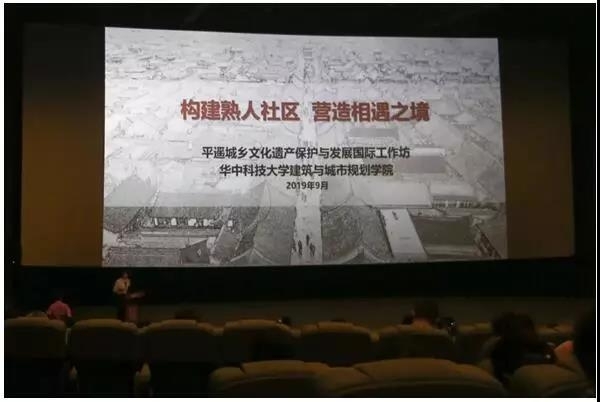 HE Yi (China, Board member of CURBH-ASC, Professor of Huazhong University of Science and Technology) introduced her research “Make a Place to Meet: Community Building of Pingyao ‘Wen & Wu’ Block”. Through an original movie called Living in Pingyao, the daily life in Pingyao was shown from the local perspective. Beyond the ancient city of Pingyao, there is also folklife for local residents while these people stabilize life inside the ancient city area compared to short-term visitors. Then, HE presented efforts that have been made towards Wumiao and Shuyuan communities by workshops of Huazhong University of Science and Technology. Through in-depth investigations, the team also found out issues due to the aging population, courtyard hollowing, and the alienation of interpersonal relationship. Accordingly, the team adopted the concept of ‘co-courtyard’ in its planning to build a better space for residents to live, work, and travel.
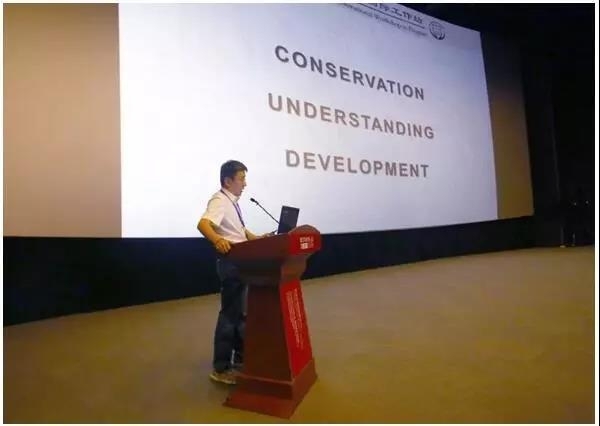 On behalf of Shanxi Urban and Rural Planning Institute, Wuhan University, and AS Corporate in France, SHI Wenzheng (Director of Urban and Rural Development Research Center of Shanxi Urban and Rural Planning and Design Institute)made a speech on “Maintain the activity: Innovating and Continuing the Vitality of Pingyao Ancient City Historic Block”. The team was inspired by the sharp contrast between the marginalization of local residents and the active participation of governments and academics in conservation practices towards historical blocks. Team members investigated both the top-down demolition work on illegal constructions and efforts made by residents towards their own issues. In this way, they hoped to provide low-cost alternatives for residents to improve the conditions of their residences, which could be in accordance with the style of Pingyao ancient city. Further, the team introduced a concealed solar power supply system and new technologies on lighting and heat insulation to improve functions of traditional residences. Through a variety of practices, the team hoped to increase the local willingness in the protection of Pingyao and enhance cooperation among the local government, professionals, and residents.
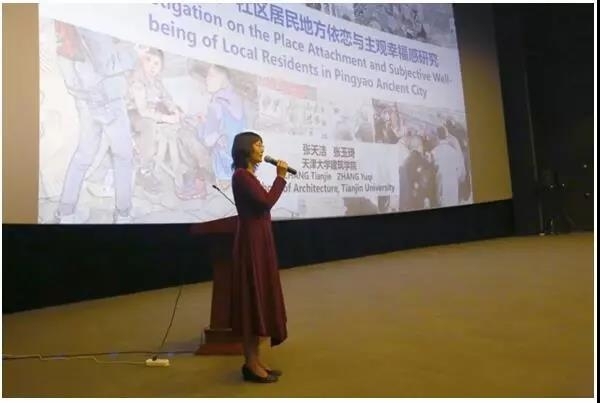 ZHANG Tianjie (Professor of Tianjin University) reported her research “An Investigation on the Place Attachment and Community Happiness of Local Residents in Pingyao”. She introduced the work of her team from Tianjin Univerity and relevant publications in Pingyao ancient city, Pingyao villages as well as local figures. The team concludes that the place attachment of local residents has positive effect towards their community happiness while their perceptions on tourism also have positive influence on their place attachment. However, these perceptions have negative impacts on community happiness of local residents, and therefore, tourism activities should be controlled carefully.
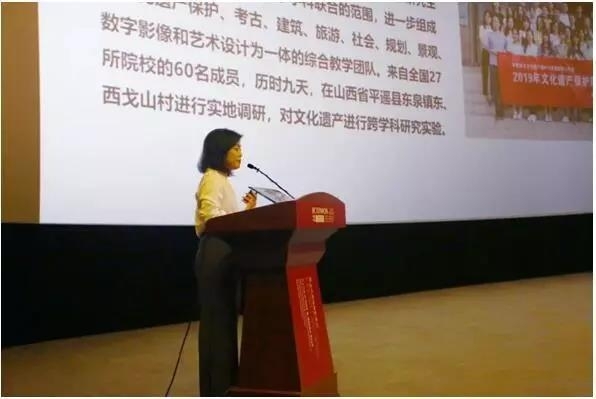 On behalf of Peking University, Li Kuanghan made a speech on “Experimental Interdisciplinary Study and Interpretation of Rural Cultural Heritage: From the Perspective of College Educator”. She first introduced the teaching mode of the workshop by her team, which aims to develop the interest of students from different academic backgrounds in promoting possibilities for interdisciplinary cooperation among heritage studies, tourism, and arts by teaching courses of architecture, anthropology, and sociology. She also demonstrated basic information of research projects in the East and the West Ge Mountain in terms of their current situations, analysis of the status quo, and potential solutions. Lastly, she pointed out the significance of interdisciplinary mindsets in experimental research and interpretation methods. Multidiscipline is not the same as interdisciplinary study, and interdisciplinary study will be a new paradigm in the future.
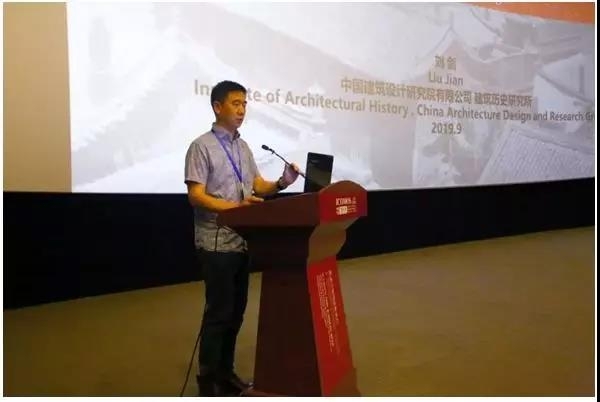 LIU Jian (Deputy Director of Institute of Architectural History, China Architecture Design and Research Group) his photo album “Pingyao’s Past and Present: A View of the Changes of Pingyao Ancient City Based on Historical Images”. The album contains photos of Pingyao taken at the same perspective as those from 1957, which can show changes of Pingyao in the past sixty years in four dimensions: the overall city, important public buildings, important shops and residences, and historical alleys. In the city level, most of the urban texture and architecture have been kept, which ensures the authenticity and integrity of the ancient city. As for public buildings, most of the important buildings that have been listed as protected heritage sites are in good conditions while other public buildings that are not tagged as protected sites, some residences, and shops have experienced changes brought by demolition, alterations and reconstruction work. Due to a lack of original drafts, most reconstructed buildings cannot be fully restored to the original state. These precious photos can show people the original Pingyao in the past as well as improve conservation towards the ancient city.
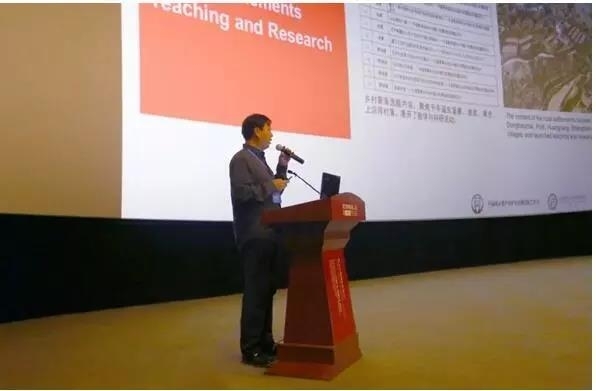 XU Qiang (Senior Engineer in the School of Architecture, Taiyuan University of Technology) presented the work of his team from Taiyuan University of Technology, which is called “Reading the Ancient City: Back to Everyday Life in Pingyao”. From the sample of Erhe Muchang Alley, the functional characteristics of the intricate architecture can be analyzed through the detailed spatial reproduction of an ordinary courtyard. Humanistic care is shown as the research covers both micro and macro aspects including the city and its streets. From the sample of a Christ church, the team explores potentials of the integration of new buildings and ancient architecture by a new spatial design for the church. As for the sample of a marginalized aboriginal neighborhood, the team designs a travel route at a minimum cost to solve the disneyfication of the area brought by tourism. The locals’ daily life is therefore enriched and becomes affordable.
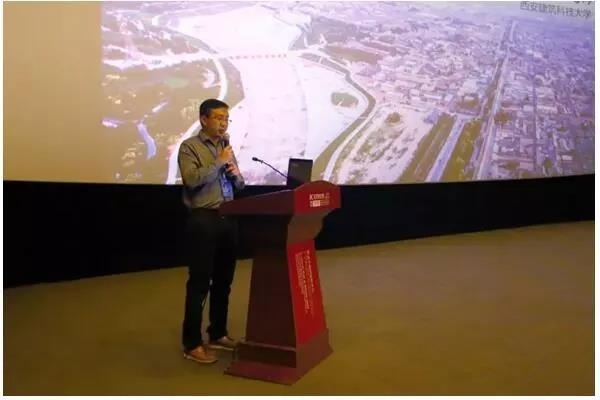 CAI Zhongyuan (Lecturer of Xi 'an University of Architecture and Technology, Researcher of Shanxi Rural Development and Construction Research Center) made a speech on “A Preliminary Study of Conservation and Renewal Mode in Dongguan Area of the Ancient City of Pingyao”. Different from other teams, CAI’s team focuses on areas outside the ancient city of Pingyao. Dongguan area was part of the ancient city of Pingyao in the past, but now it seems to be excluded. Apart from the complete different spatial texture, Dongguan area has suffered from the deterioration of historical public buildings and luxurious courtyards. Realizing the issue, the team suggests reshape the continuity of the area. Methods include enhancing the spatial continuity, diversifying the living mode, exploring cultural values, introducing cultural functions, and increasing space for recreational purposes. In addition, a cloud platform can be built to enhance the participation of tourists and residents in urban renewal.
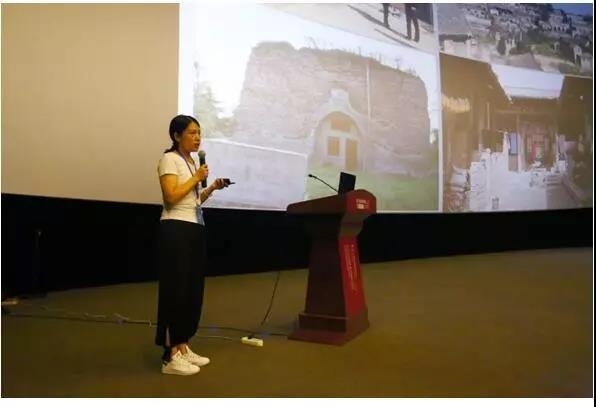 WEN Junqing (Secretary General of Shanxi Urban Planning Society) presented her work “The Geometric Beauty of the Cave Architecture in Pingyao”, which showed the uniqueness and beauty of the cave architecture in Pingyao. Her team investigated the cave architecture in all areas of Shanxi to analyze the characteristics and formation mechanisms of caves in different areas, ingredients, geometric shapes of their holes, and their built eras. Take geometric shapes of the holes as an example. Apart from the standard shape, there are other shapes that are slightly different from the prototype, which are cases of continuous corrections on round arches by the local craftsmen. Also, based on differences in the built materials, the cave architecture can be further categorized as earth caves, stone caves, and brick caves. All the presented pictures brought a visual feast of the cave architecture in Pingyao to the attendants.
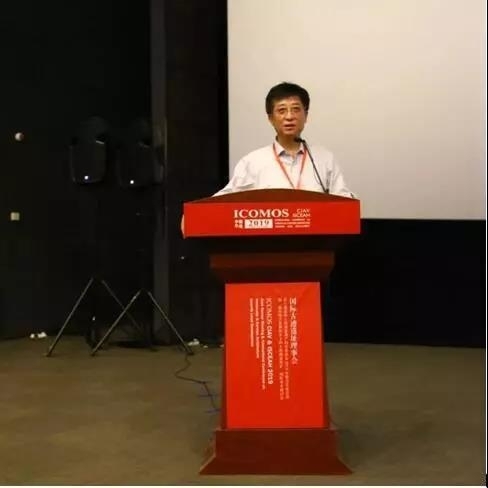 LI Jinsheng (China, Deputy Director of Department of Housing and Urban-rural Development of Shanxi Province) made a summary for the conference. As a local growing up in the ancient city of Pingyao, he saw the conference as the most important international conference in Pingyao and believed that it would bring great significance to the conservation and development of Pingyao. The ten reports were completed thanks to a year’s effort of Pingyao International Workshop, which involved ten teams, thirty one organizations, and more than a thousand people. These reports discussed the relation between heritage and people, human life, rural heritage, and the application of rural technologies. LI also expressed his great attitude towards ICOMOS-CIAV & ISCEAH for introducing this excellent conference to Pingyao.
Technical Visits
Technical visits were organized during the conference for the restorations of traditional courtyard and city wall.
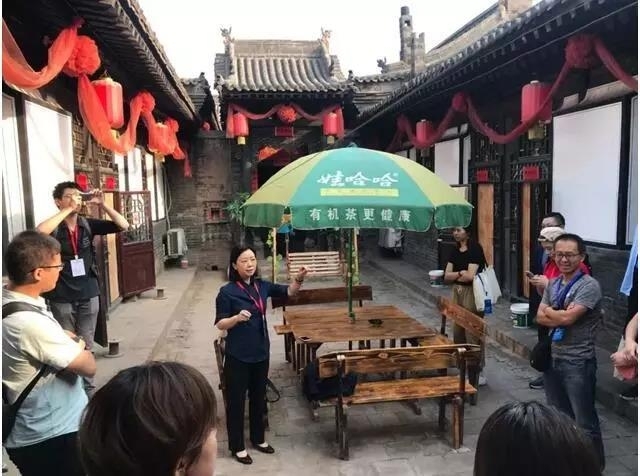 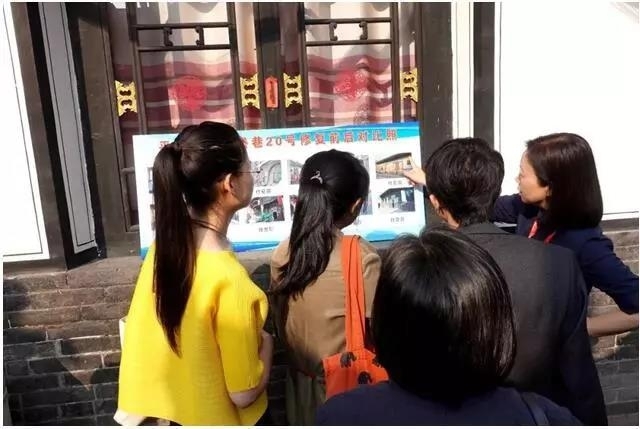 Technical visit
Professor Shao Yong and Mr. Li Shaohua in a courtyard introduce the problems encountered in the restoration process.
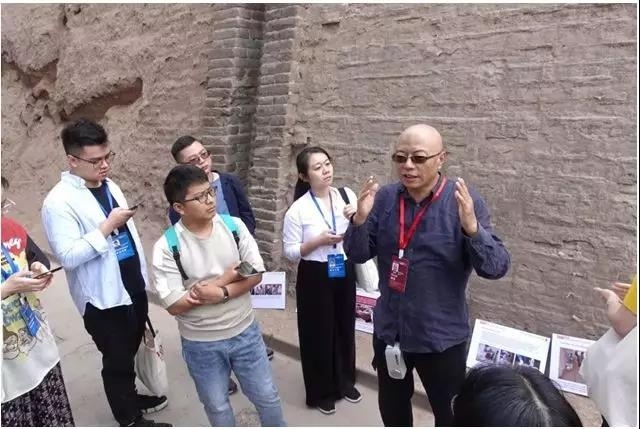 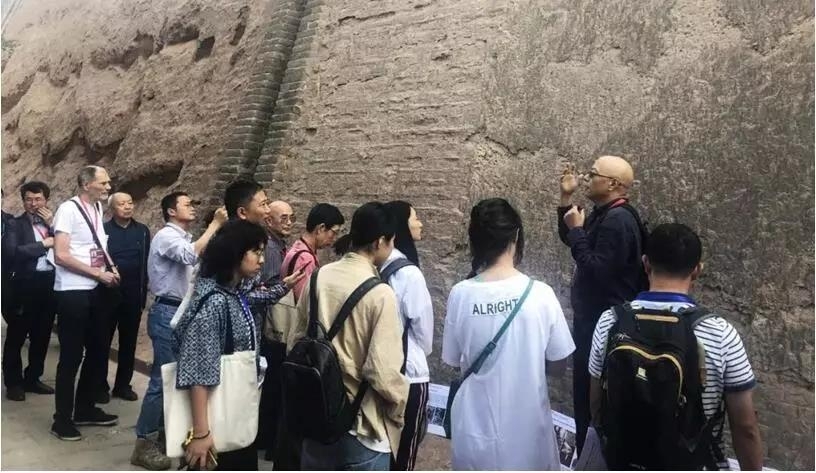 Professor Dai Shibing and Mr. Wang Guohe explained in detail the maintenance strategy of the inner side of Pingyao Ancient City Wall, shared the ideas and methods and showed the maintenance results.
Other Outcomes
1. Pingyao Initiative (Draft)
Based on long-term work experience and communications with Chinese and international experts during the preparatory process of the international symposium, at the closing ceremony on September 8th, Professor Shao Yongi read out the draft Pingyao Initiative for the Protection of the Cultural Heritage of the Public. The discussion paper focuses on the following three aspects:
1. ACKNOWLEDGE THE KEY ROLE OF THE PUBLIC IN THE CONSERVATION OF CULTURAL HERITAGE
The general public is the creator of and the witness to cultural heritage.
The general public is the protector and inheritor of cultural heritage.
Public participation is essential for the conservation of human-inhabited heritage sites (living heritage).
2. THE CONSERVATION OF CULTURAL HERITAGE AND THE IMPROVEMENT OF HUMAN SETTLEMENT
The residential function of human-inhabited heritage should be maintained as far as possible and favorable conditions and sound facilities be created to ensure the wellbeing and livelihood of people.
Specific and effective daily management mechanisms should be established and capacity building schemes provided.
3. PUBLIC PARTICIPATION IN THE CONSERVATION OF CULTURAL HERITAGE
A long-term mechanism should be designed and established for public participation, accompanied with corresponding legal and policy support.
The bottom-up initiatives to protect heritage by residents and communities should be encouraged and supported, with a respect of the values and demands they express for themselves.
Diversified tools of public participation should be employed in the process of heritage protection to ensure the levels of involvement at each stage.
The essential role of the “third party” should be increased with full engagement of experts, professional organizations, volunteer groups and universities.
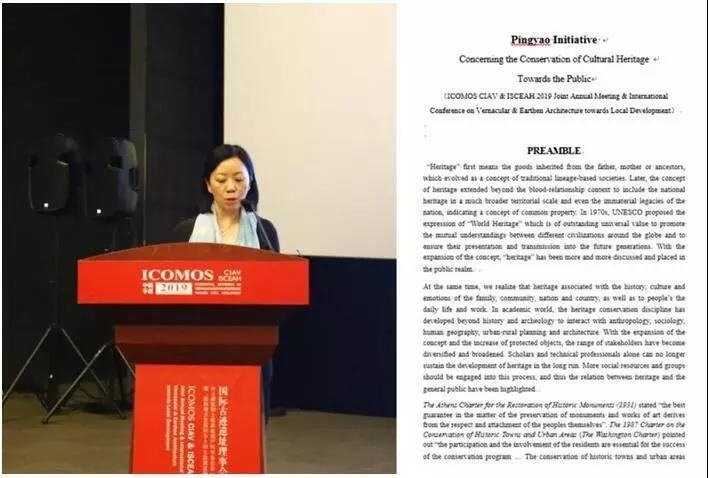 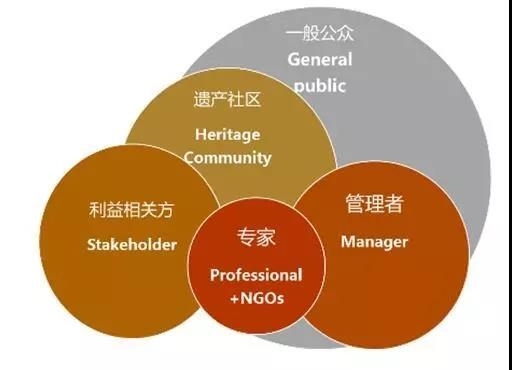 Link:
http://2019ciav-isceah.whitr-ap.org/index.php?classid=12391&newsid=19831&t=show
2. Pingyao Roundtable
On the evening of September 8, after the closing of the conference, the local managers of Pingyao, the representatives of the community and craftsmen and the experts at home and abroad held a round table on the specific issues of the protection of Pingyao Ancient City. The round table was chaired by Niu Jitong and Professor Shao Yong. Representatives from various government departments (such as security, community, tourism, cultural heritage protection, etc.) and local craftsmen spoke at the meeting, shared their experiences, and raised the problems and confusions encountered in their work, and discussed the specific issues with the participating experts. Finally, the Vice Mayor said that Pingyao will continue to support academic activities, work camps and other exchanges at Pingyao and hoped that experts and professors will actively participate and continue to contribute to the protection of urban and rural heritage in Pingyao Ancient City.
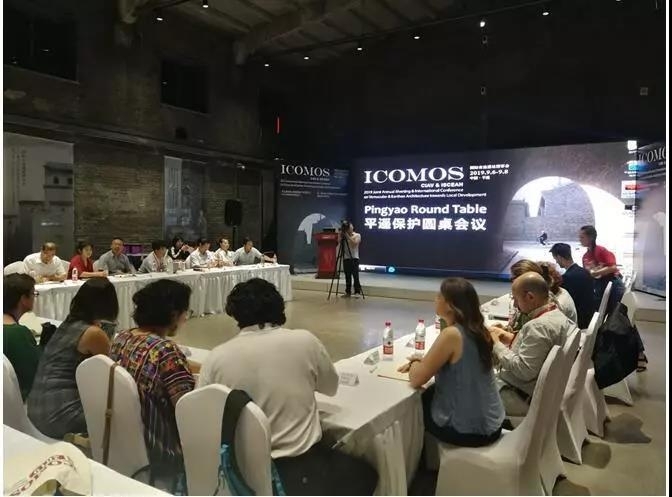 Roundtable
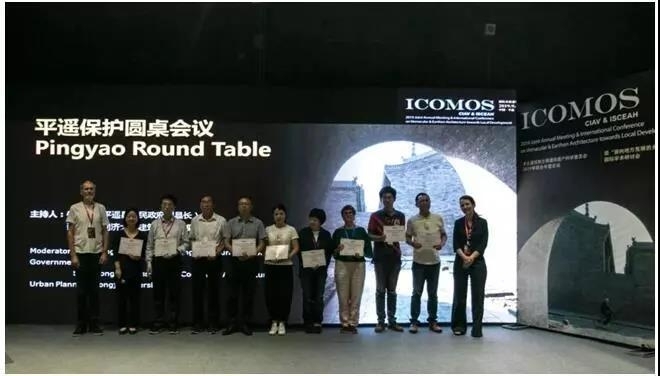 Organizing committee
3. Website and publications
Shao Yong and her team habe done a lot of work for this international conference, and built an official website (http://2019ciav-isceah.whitr-ap.org). The preparation process and related outcomes of the conference can be queried on the website.
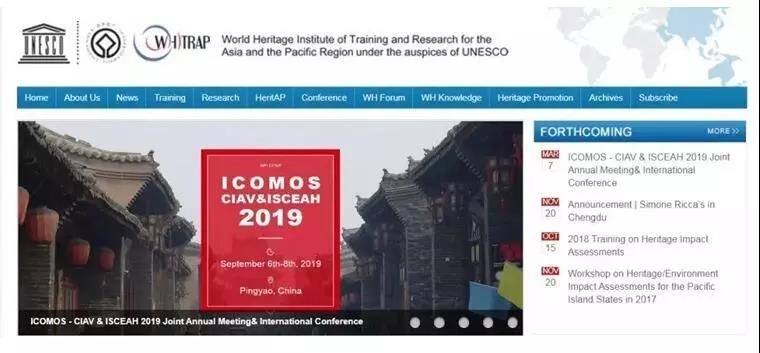 The conference proceedings has been published before the opening of the conference.
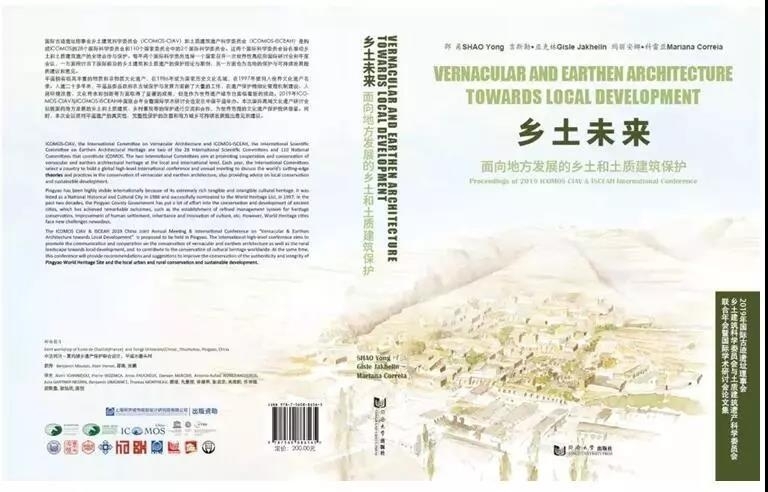 Note: this article is edited based on the conference reports of UHC team during the conference.
|
- Documentary: 2023 World Heritage Creative X Innovators Conference and the AWHEIC Third Anniversary Celebration
- Publication | WHITRAP Newsletter No. 61
- Mt. Huangshan first show in Climate Action for World Heritage
- Call for Good Practices: 2024 Environment and Resilience
- FAQs | 2024 Call for Good Practices
- Operational Guidelines for the Implementation of the World Heritage Convention 2017
Copyright © 2009-2012 World Heritage Institute of Training and Research-Asia and Pacific (shanghai)


